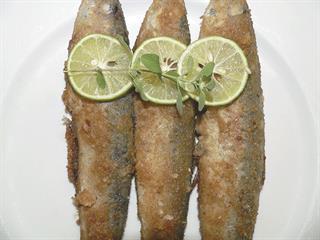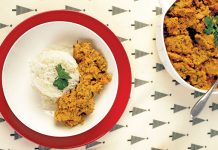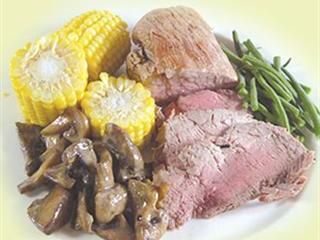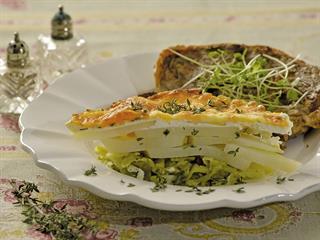
To make Durban sardines in polenta for four, you’ll need:
- 12 fresh Durban sardines
- 100g polenta (yellow maize meal)
- 2 garlic cloves
- 2 eggs
- Couple of sprigs of fresh origanum
- 3 limes
- Black pepper
- Salt
- Extra-virgin olive oil
The secret lies in the word “fresh” – nothing goes off quite as fast as a Durban sardine. Begin by cleaning the fish. This is best done outdoors, on a pile of clean newspapers that will absorb the blood and sea water in the gutting process. When its over, the paper makes a useful parcel for the rubbish bin.
Gutting a fish this small requires discipline by the knife wielder. Hold the fish securely in one hand and slice it open ventrally. Insert a finger and dislodge unwanted bits. Rinse the cleaned abdominal cavity under running water.
Prepare the rest of the ingredients
With a zesting tool, remove the zest from two of the limes. The zest is the peel’s outer layer that contains most of the aromatics that make limes smell so good. You can use lemons for a substitute. Cut the remaining lime into thin slices to add as a final garnish.
Now for the polenta (yellow maize). Here too you can comfortably substitute standard white mealie meal. In my view the only difference is colour, although highly partisan Italians may disagree. Place 100g or so of the maize meal in a flat dish.
Crush, peel and finely mince the garlic. Mix this with the lime or lemon zest. Insert a little of this aromatic mixture in the abdominal cavity of each fish.
Whip the two eggs in a bowl, then pour the whipped eggs into a flat dish. Dip the sardines first into the egg and then roll them in the polenta or mealie meal. Sprinkle freshly ground black pepper and a little salt over the battered sardines.
Select a heavy-bottomed frying pan and pour in enough extra-virgin olive oil to cover the bottom to a depth of 5mm. Bring this up to medium heat then add the battered sardines. Cook them for two to three minutes per side, turning them twice.
Remove and allow to drain briefly on clean paper towels. If your pan is big enough do all 12 fish at once, or cook them in batches using the warmer drawer of your oven to keep them warm. Garnish each fish with a thin slice of lime and a sprig of fresh origanum.This goes best with a fresh green salad and a chilled, crisp white wine.
Keep it fresh & full of flavour
This method works well with other fresh-water fish like tilapia and trout.As in all cooking, freshness is the first requirement for an outstanding meal. If you’re buying fish from a shop there are two useful tests of freshness. First, use your nose. If it’s even slightly off, your nose will tell you. Second, examine the fish’s eyes. These should be clear and not cloudy.
Diners used to marine fish often find their fresh-water cousins to be bland and sometimes muddy in flavour. I know of no useful cure for muddy-tasting fish except to use it as bait for something better to eat. Bland fish presents the imaginative cook with no real problems. The secret is to use powerful flavouring agents to buffer and augment the river fish. These include aromatic herbs, like fennel, which makes a major contribution to flavour all on its own.
Or whip up a quick sauce that can be added to the prepared fish before serving. Try mixing 150ml of mayonnaise with 1 teaspoon of coarse Dijon mustard, a couple of teaspoons of finely chopped pickled cucumbers and generous dash of Tabasco.













